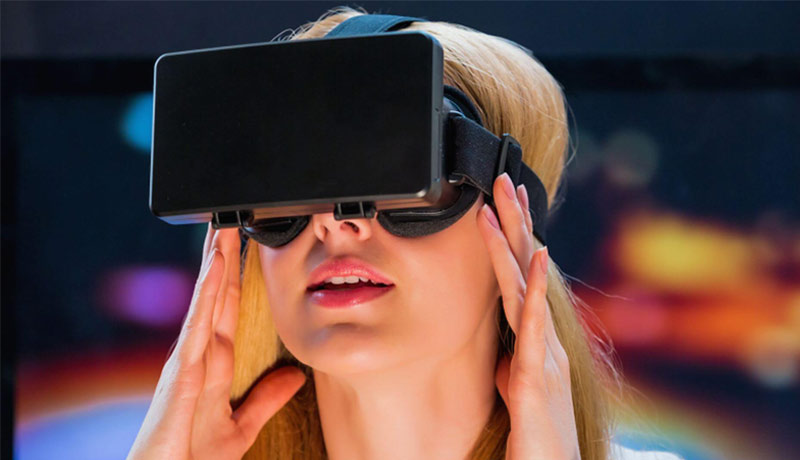
The rise of Artificial Intelligence (AI), Augmented Reality (AR), and Virtual Reality (VR)adoption in several industries is undeniable. It helped the society be more resilient in the face of a pandemic, allowed businesses to stay open and consumers to stay safe.
AI is the ability of computers to collect data, learn, and think by using algorithms which the machine uses to classify, analyze, solve problems, and make predictions. In the Middle East and Africa, AI is slighted to grow by 83% from USD 290 million in 2019 to USD 530 million by 2022, according to the International Data Corporation. The UAE, which sits at the forefront of technology adoption, is amplifying this growth with its AI Strategy 2031, which is aimed to enhance performance and efficiency of key sectors including health, education, transportation, energy, tech, and space.
V/R is an immersion experience that makes a person feel as if they were somewhere else; whereas A/R is a combination of real and virtual worlds, integrating text, graphics, and audio with real-world objects. A global report suggests that the A/R and V/R market is expected to reach USD 571.42 billion by 2025.
In this article, GELLIFY presents the latest and some of the most innovative AI, AR, and VR applications to-date that are partners and/or part of the GELLIFY portfolio of start-ups.
Healthcare
The healthcare sector is renovating its processes with latest technologies to fulfil a multitude of functions to fit patients’ evolving needs. A patient can now have a body scan from the comfort of his home, through a mobile app. iGOODI, a high tech project factory which uses AI to design objects and experiences, creates an avatar of a patient in real-time which health practitioners can refer to when analyzing data collected from the scan. This technology is currently being applied in orthopedic and dermatology settings.
For immediate vital analyses, Anura, a mobile application can measure the state of one’s health through a 30-second facial scan. Similarly to medical wearables, the app can recognize and measure physiological, psychological, vital signs, and stress levels through biosignals or markers.
Education
Education is among the sectors most impacted by the current pandemic. We can expect to see the remarkable growth of technology usage with the preference of e-learning method. In the UAE, university students use AI to predict economic activities such as demand volatility. For smaller children,micro-rewards-based systems can help to make smart education effective. The likes of Class Dojo, an application in which students can receive points for doing tasks and track daily performance, like a game, is a blended learning method called gamification. A few more examples are code.org and Minecraft education, which draw upon activities that children already enjoy in order to improve their learning.
Hospitality
Hospitality is among the sectors that were most affected by the pandemic. In the next few years, we will see hospitality expand from its revenue-generating physical events and start to offer more virtual or hybrid venues, provide facial recognition in self check-in/out, and offer voice command in elevators and inside the room. A great example of this is a hotel owned by Chinese e-commerce giant Alibaba, the Alibaba FlyZoo Hotel, which is run entirely by robots.
Green Building
Green Building Councils around the world aim to eliminate embodied carbon emissions from the buildings and construction sector. New and existing buildings can reduce consumption and improve comfort for both humankind and nature through the energy-saving solutions provided byEnerbrain. This solution provides sustainability and savings by using easily-installed sensors, algorithms, actuators and a dashboard to measure, analyze, and monitor a building’s temperature, humidity, and CO2. Buildings that use Enerbrain have reduced energy bills up by to one third while giving more comfort to the occupants, and CO2 emissions are reduced. If all buildings on the planet were use this system, we would save about 1.6 billion tons of CO2, equivalent to 170 million trees.
Retail
A few of the emerging trends in A/RV/R space are indoor navigation, remote assistance, and webA/R experience where a user can access the augmented world from the webspace and does not need to download the mobile application anymore. Incorporating these technologies are not solely for attracting users but help them navigate the physical store without actually being there.
Hevolus, a Microsoft mixed reality partner, developed augmented store at home for Natuzzi Italia aimed to provide a whole new level of customer experience where customers can walk through the store virtually. It allowed the brand to lower the stock and inventory which consumed space at each store while increasing sales per square foot.

“AI improves resilience and flexibility, and companies need the digital representation of their businesses. We can leverage data and new technologies to optimize our services and improve human performance. In the near future, we can expect to see an evolution and collaboration between AI, A/R and V/R, and humans, making it easier to deliver immersive experiences more quickly and efficiently than ever before,” said Massimo Cannizzo, GELLIFY Middle East Co-founder and CEO.
